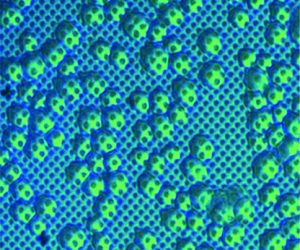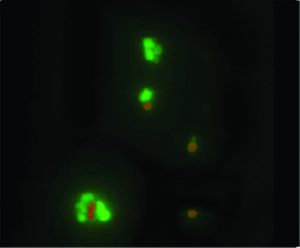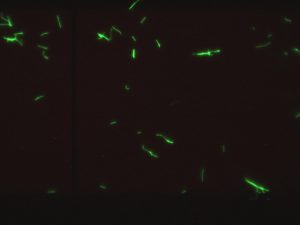
Microbiological analysis of liquid samples by capture and analysis of microorganism on microsieves is a rapid method for microbial quality control. Microbiological control in the beverage industry and water treatment is of vital importance to validate the quality of production. The detection of micro-organisms (yeast cells and bacteria) as early as possible can prevent the occurrence of production losses or health problems.
Current technology
Currently, the ‘plate count’ method is used in e.g. breweries. Contaminants are capture by filtering a well defined volume of beer with potential contaminants through a paper filter plate. The filter is subsequently placed on a cultivating plate, which is selected for specific yeast and/or bacteria and is stored in an incubation stove. After 48-96 hours of incubation, the number of yeast/bacteria colonies are being count on the filter plate with the eye. This number is a measure for the amount of living micro-organisms present in the original beer sample.

Rapid detection method
For situations in which rapid results (within half an hour) are required, Aquamarijn, in collaboration with a few breweries, has therefore developed a new, fast test method using a microsieve test disc. In this test method, the liquid sample is quickly filtered through the microsieve disc. The microsieve membrane surface retains most of the content of the sample, and is scanned by microscope directly. The inertness of the membrane allows for immediate staining, directly at the membrane surface for use with fluorescence microscopy. As the membrane material has no autofluorescence, this yields clear images. Because the total surface area of the microsieve is small in comparison to the collected sample, it is easy to count individual micro-organisms.
Furthermore, with the microsieve test method it is possible to differentiate with selective staining agents between dead and living cells, something that is difficult with ‘plate count’ (living cells only), ATP (living cells only) and PCR (dead plus living cells) methods.

Quality control
The microsieve test disc for microbiological analysis may be used in applications other than beer screening. For example, the test disc are also suitable for the quality control of drinking water on the presence of Cryptosporidium, Legionella and E-Coli.
Properties
- Rapid detection of micro-organisms and particles present in liquid
- Ultra low detection limit (1 micro-organism / ml)
- Fast results (typically less than 1 hour).
- No auto-fluorescence allows for use of living/dead staining kits.
- Automation possible with image recognition software.
Innosieve Diagnostics BV is a product company which develops tools for fast and simple microbiological analysis with high reliability. Aquamarijn provides microsieve chips and services for the Innosieve Sieve-ID kits. the video below illustrates the Sieve-ID diagnostics work-flow:
Further Reading
- Nguyen, A. T.; van Doorn, R.; Baggerman, J.; Paulusse, J. M. J.; Klerks, M. M.; Zuilhof, H.; van Rijn, C. J. M., Flow-Through Microbial Capture by Antibody-Coated Microsieves. Advanced Materials Interfaces 2015, 2, 201400292.
- van Rijn, C. J. M., MicroFiltration. In: Nano and Micro Engineered Membrane Technology. Elsevier: Amsterdam, 2004; pp 243-248
